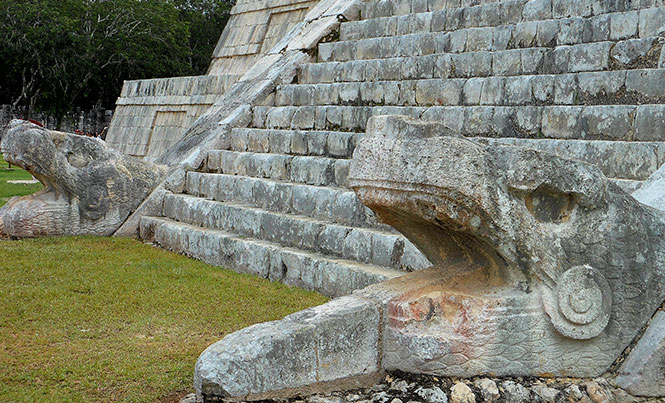
The worship of the Feathered Snake is present in most of the cultures in Mesoamerica, and it is one of the most important icons in the region. It is unclear why people chose this particular image to worship, although, interestingly enough, it does recall the image of a dragon, especially when you think about the influence of Eastern countries over ancient America.
In the Maya culture, this description of a snake-like god with beautiful feathers belonged to the god Kukulcan (kukulmé, feathers and kan, snake), who was considered one of the gods responsible for the creation of the world, as well as the god of the wind. He dates back from way before the peninsular Maya people. According to Friar Diego de Landa, one of the main Spanish missionaries responsible for the conversion of the Maya to Christianity in the 16th century, Kukulcan existed as a man who came from the west long before the Itzaes (previously mentioned in this column) arrived from Cozumel and founded Chichen Itza.
It is easy to link Kukulcan to Mesoamerica. Besides their resemblance, he has a lot of similarities with the Aztec and Toltec god Quetzalcoatl, so even if you haven’t read anything about these gods before, it is easy to relate them through the name quetzal, which is the name of the currency, as well as the bird, symbol of Guatemala (in Mesoamerica).
The Toltec god.
When the Toltec warriors from Tula arrived at the Yucatan, they found a very smart, educated and wise group of people (the Maya), but with little skill for war, so it was really easy for them to occupy the region. Soon enough, their main god, Quetzalcoatl, was being worshiped by the Maya.
The Castle.
The Maya were great astronomers, and they could predict important events. Priests had great power due to their ability to predict the perfect timing for planting crops, rainy seasons and other important moments. To increase their power, they gathered the people in Chichen Itza on the days of the equinox so Kukulcan could speak through them. The now well-known phenomenon that takes place in the pyramid amazed the crowds, as it does even today.
Even though Kukulcan isn’t worshiped nowadays, he enjoys international recognition. He is visited by thousands of people every year as he descends from the stairs of the Castle twice a day during the equinox.